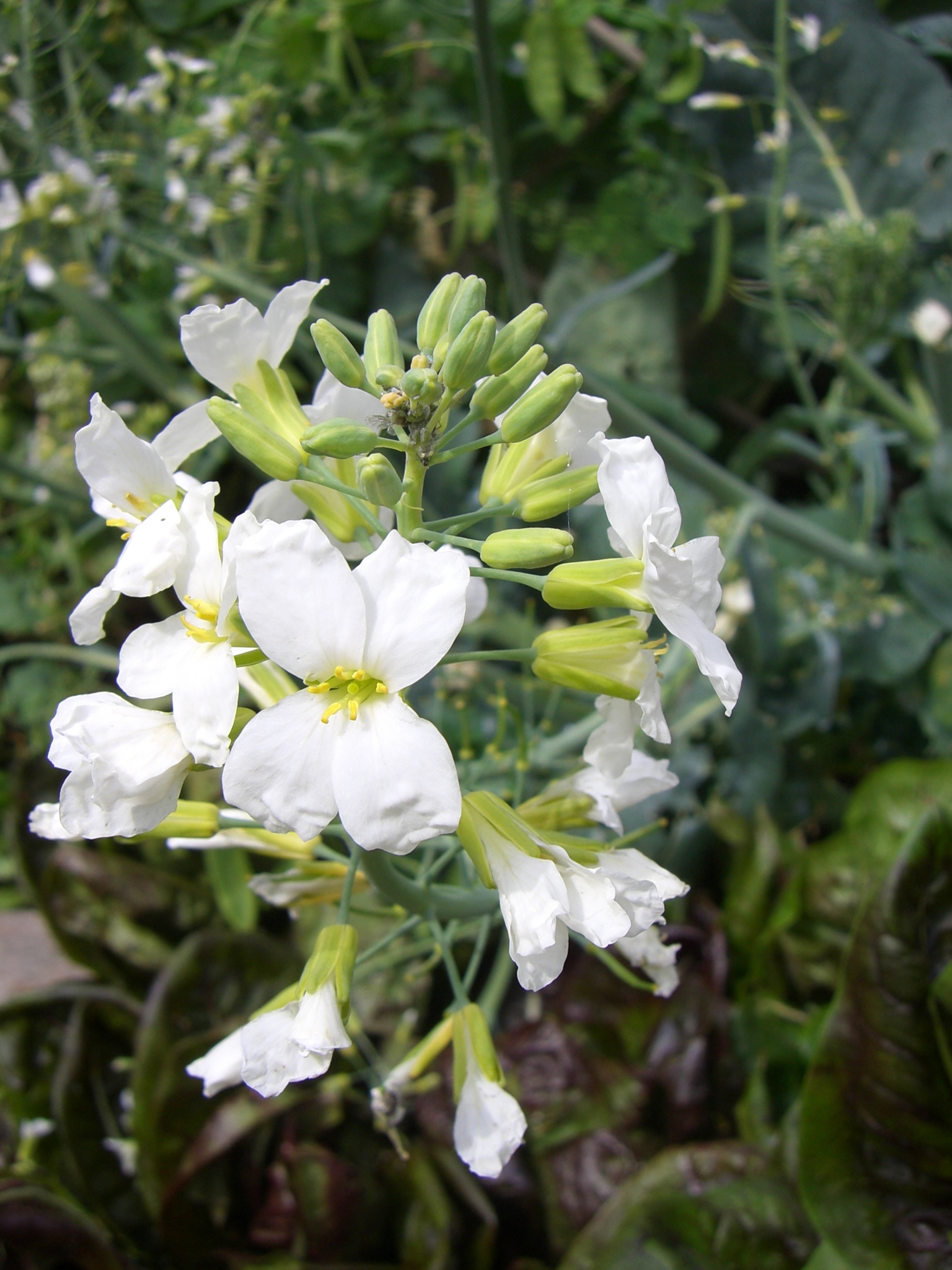
Greek brazo — cook, referring to the edible members of the genus. The Latin name for cabbage.
Annual biennial or occasionally perennial, mostly hairless herbs or rarely small shrubs. Leaves variously cut or toothed, often waxy blue and lyre-shaped. Flowers in terminal clusters, yellow or occasionally white; sepals 4, petals 4, stamens 6. Fruit an elongated siliqua with a prominent mid-vein; seeds in 1 row.
Cultivation and hybridisation over the centuries has led to difficulties in species demarcation. There are many weedy species.
Mostly by seed.
Cultivated as the source of many vegetable 'greens'. Seeds producing oils used for cooking, lubricants, illuminants etc. Cosmopolitan cultivated species include B. oleracea, (Cabbage, Cauliflower), and B. napus (Rape) which has flower buds that overtop the flowers, except where the buds have aborted, unlike B. rapa where the flowers overtop their buds. Seeds of Brassica nigra (L.) Koch, Black Mustard, are the source of table mustard and the seedlings as sandwich and salad greens; B. juncea (L.) Czerniak is occasionally available as oriental greens, Gei Choy.
Fruit valves with a prominent midvein; stigma prominent and beaked; seeds in 1 row.
About 30 species from Eurasia (Australia 9 species, several naturalised).
Prakash & Hinata (1980), Tsunoda et al. (1980), Gray (1989).
Source: (1997). Brassicaceae. In: . Horticultural Flora of South-eastern Australia. Volume 2. Flowering plants. Dicotyledons. Part 1. The identification of garden and cultivated plants. University of New South Wales Press.
